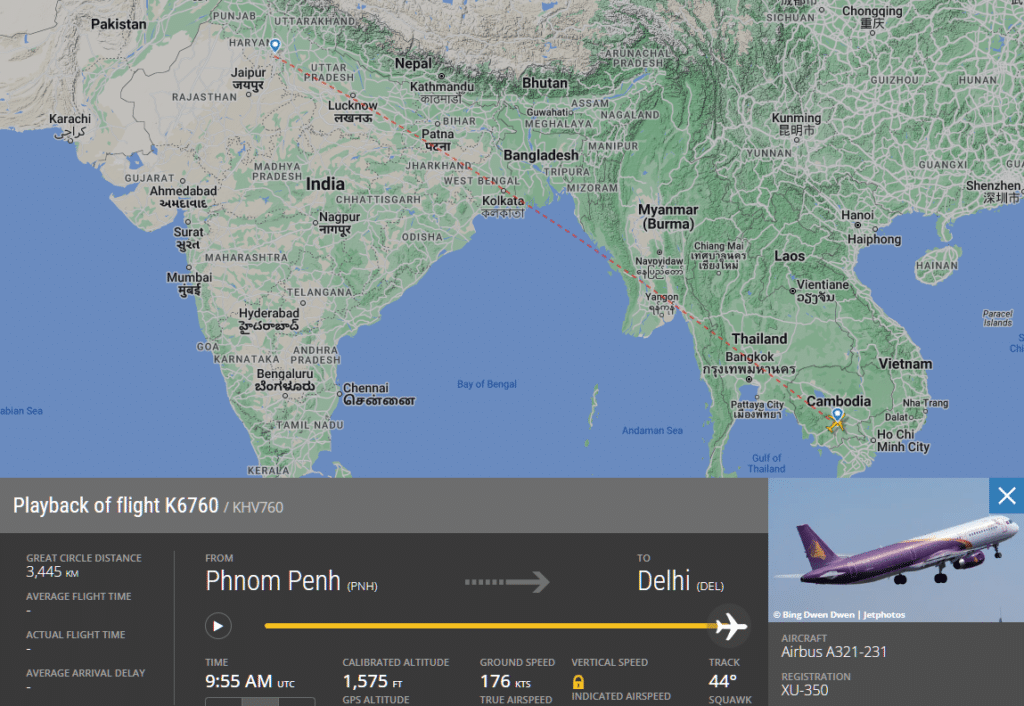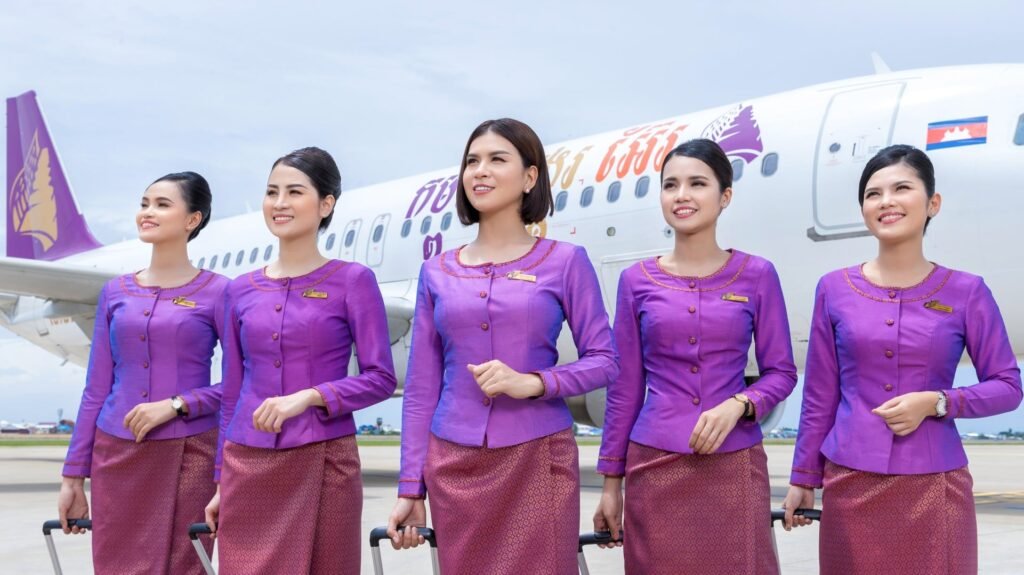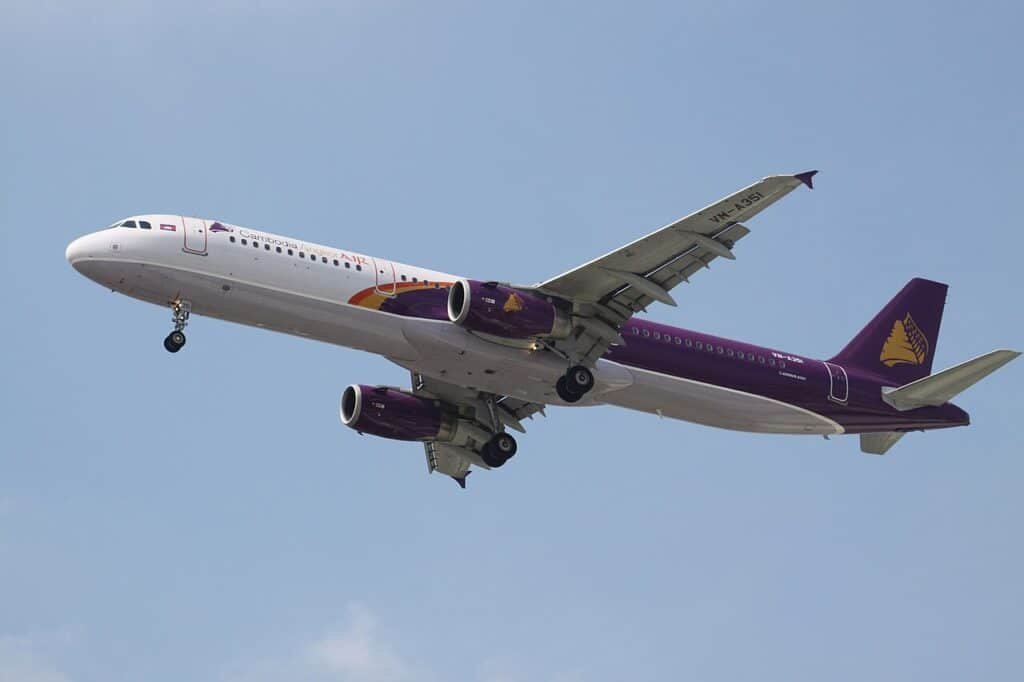- SHORT GLIMPSE
- Cambodia Angkor Air has launched its maiden service between Cambodia and Delhi.
- The inaugural flight is in the air.
- The airline has major expansion plans for the Indian market.
Cambodia Angkor Air has marked a historic milestone today with the launch of its inaugural flight connecting Cambodia and India. The airline has opened a new chapter in the Asian air travel market. In addition to the entry, the airline has plans to expand its services beyond Delhi.
Cambodia Angkor Air: Delhi Launch
Cambodia Angkor Air has launched non-stop flights connecting Phnom Penh International Airport (PNH) and Delhi Indira Gandhi International Airport (DEL). The inaugural flight is in the air, operated by an Airbus A321 registered as XU-350. The airline has a single A321 in its fleet.

From now on, Cambodia Angkor Air will operate four times a week between Cambodia and Delhi. Flights will be operational on Mondays, Wednesdays, Fridays, and Sundays. The airline will use a mix of A320 and A321 on this route.
Here is a look at the flight timings:
Flight Number | Origin | Departure Time | Arrival Time | Destination |
K6 760 | Phnom Penh | 16:35 | 19:50 | Delhi |
K6 761 | Delhi | 20:50 | 02:50 (+1) | Phnom Penh |
The launch event took place at the VIP Terminal of Phnom Penh International Airport, with H.E. Sante Pundit Neth Savoeun, Deputy Prime Minister and Chairman of the National Civil Aviation Security Committee, H.E. Mao Havannall, Minister overseeing the State Secretariat of Civil Aviation, H.E. Sok Soken, Minister of Tourism, H.E. Mrs. Devyani Khobragade, Indian Ambassador to Cambodia, and various stakeholders from the aviation and tourism sectors in attendance.
H.E. Sante Pundit Neth Savoeun said that the direct connection will contribute to increased trade activities and cultural exchange between both countries.

Along with the maiden connection between India and Cambodia, this is the longest route for Cambodia Angkor Air. Before this, the Phnom Penh to Zhengzhou route was the longest in terms of air distance.
IndiGo is also expected to start flights between Delhi and Cambodia. While Angkor Air connected Delhi to Phnom Penh, IndiGo is expected to bridge Delhi with Siem Reap Province.
Entry and Expansion
The airline aims to increase connectivity between India and Cambodia. Within six months of entry, it is looking to upgrade the Delhi service from 4X weekly to daily. Subject to market demand, it will be exploring opportunities to extend its reach to Mumbai Airport.

Initially, it will operate independently, but after establishment, it will sign a codeshare agreement with an Indian carrier. It has been stalking for a codeshare partner.
The initial focus will be on leisure travelers. The Cambodian authorities are anticipating a rise in medical tourism between both countries. In addition, the tourism flow from India to Cambodia is expected to double with these flights. At present, it has yet to reach pre-pandemic levels.

Cambodia State Secretariat of Civil Aviation (SSCA) has revealed that IndiGo has also received time slots for flights connecting Delhi to Siem Reap province. As of March 2024, the airline was expected to apply for a landing permit and submit its flight schedules. Since then, there has been no update from the airline.
Conclusion
Cambodia Angkor Air has launched non-stop flights between Phnom Penh and Delhi. The airline will now operate four times a week on this route. In the future, it is planning to enhance frequency to daily. Furthermore, it is aiming to add flights to Mumbai. IndiGo has also received time slots for flights between India and Cambodia.
What do you think about this new connection between India and Cambodia? Discuss in the comment section.
With Inputs From The Hindu Business Line
Featured Image Credits: aeroprints.com via Wikimedia Commons
Read the Latest Aviation News on Times of Aviation
Read More: Switzerland Entry: Air India Launch Flights Between Delhi and Zurich
Website Disclaimer: Times of Aviation does not claim copyright ownership of any information or images used on this website. Usage of content falls under fair use.


